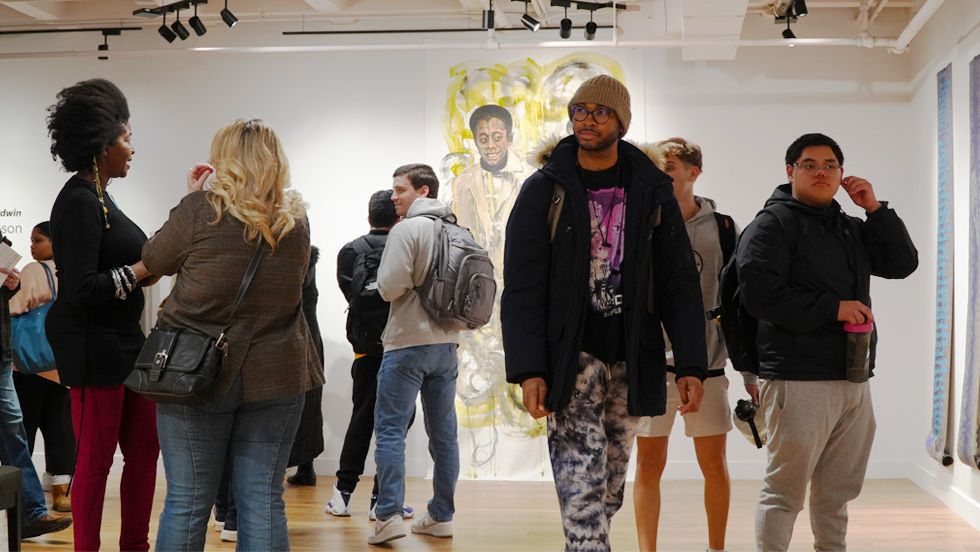
For Black History Month, artist Sabrina Nelson’s exhibit honoring James Baldwin explores his legacy—showcasing art, activism and Baldwin’s profound influence on both personal and collective identities.
Sabrina Nelson has been a professional interdisciplinary artist for nearly four decades, and her work on civil rights activist James Baldwin has traveled just like the man himself often did, from Baldwin’s native Harlem, to California, the American University of Paris in France and now Adelphi University, current home of some of the pieces.
A lecturer and educator of art and art history, she earned her BFA at the College for Creative Studies in Detroit, Michigan, in 1991, and has received several awards for her “artivism.” After exhibiting Frontline Prophet: James Baldwin at Adelphi as a part of the Center for African, Black and Caribbean Studies’ The Fire This Time: A James Baldwin Centennial Celebration, Nelson now has more accolades to add to her name.
For this Black History Month event, organized by Adelphi’s Center for African, Black and Caribbean Studies, more than 50 students, faculty and other guests first visited the Ruth S. Harley University Center Gallery, where Nelson’s work will continue to be displayed until February 28. Patrons joined the artist for a short lecture and Q&A session following the gallery walk.
Raising Awareness of James Baldwin
What began as a series of sketches developed into a lengthy project made of pieces whose mediums range from large sheets of paper to tapestries. Nelson emphasized how Baldwin is an underrepresented individual in the public discourse about the civil rights movement of the 1960s, noting that not many high school students know about his legacy. As she drew him more, Nelson felt a deeper connection to Baldwin, saying, “He chose me.”
“I feel that there’s a part of Baldwin that teaches us to be authentically truthful to who we are first, and then we can go into the world,” Nelson said. “And we can’t love ourselves without acknowledging where we come from and that we’re all a part of this…Loving ourselves deeply first is a gateway to learning how to love each other. That is a huge lesson that I got from Baldwin as I drew his face and listened to his words.”
A self-described optimist, Nelson hopes this event isn’t the last that her audience will learn about Baldwin—she hopes they’ll do further research to understand the man as much as she has come to do. The Giovanni’s Room author has helped Nelson when working, as she said that writing out Baldwin’s words inspired her when artist’s block acted as a barrier. By using Baldwin’s story as a Black man who chose his own direction in life when he felt being in America would hold him back, Nelson feels that honoring Baldwin is a way of honoring her own family, including her artist father, who died in recent years. Baldwin’s taking of initiative motivated Nelson, with her referring to his quote, “There is never a time in the future in which we will work out our salvation. The challenge is in the moment, the time is always now.”
She continued: “For some people, they will only see the man. For others, they will feel the man.”
Visiting the Gallery at the University Center
The exhibition, curated by Ashara Ekundayo and Jonathan Duff, initially ran in the Swirbul Library Gallery from November 18 through December 19, and is now free and open to the public in the Ruth S. Harley University Center Gallery until the end of the month. For more information, contact the Center for African, Black and Caribbean Studies at 516.877.4978 or Fabian Burrell, MS ’17, Coordinator for Programming and Community Engagement, Center for African, Black and Caribbean Studies, fburrell@adelphi.edu.